At the Sign of the Mortar and Pestle
The persistence of mercantile emblems
Alyssa Pelish
During a prolonged stay some years ago in the rural Wisconsin town where I grew up, I would regularly pass through a commercial intersection on the main street. The concrete block of a Marketplace Foods grocery, circa 2002, sat squatly on one side, the similarly prefab Walgreens, circa 2008, on another, each afloat in a vast sea of parking space. It looked like any number of strip mall intersections in America, those atmospheric dead zones removed from any particular place or point in history. And indeed, much of the little town’s early architectural history has been lost: its Carnegie library, a neoclassical relic in brownstone, was demolished decades ago, as was the 1930s movie house across the street, built out of the bones of an old feed mill. Meanwhile, the fast-food franchises and big-box stores that have colonized what was once farmland edge closer to the remains of the old downtown. In the winter, when heavy snow coats the dormant fields and a tone of gray is dominant, the streets seem especially anonymous.
What would always catch my eye, though, was the glowing white-on-red pylon sign planted at the edge of the Walgreens parking lot. It was a nice, wide, bell-shaped mortar, its pestle at the reliably jaunty angle one expects. The red script of the Walgreens W looped possessively across the mortar—but it was the sign of the mortar and pestle, nonetheless. And this sign, as it happens—an oversized depiction of a mortar and pestle that indicates a place where medicines are sold—is very old.
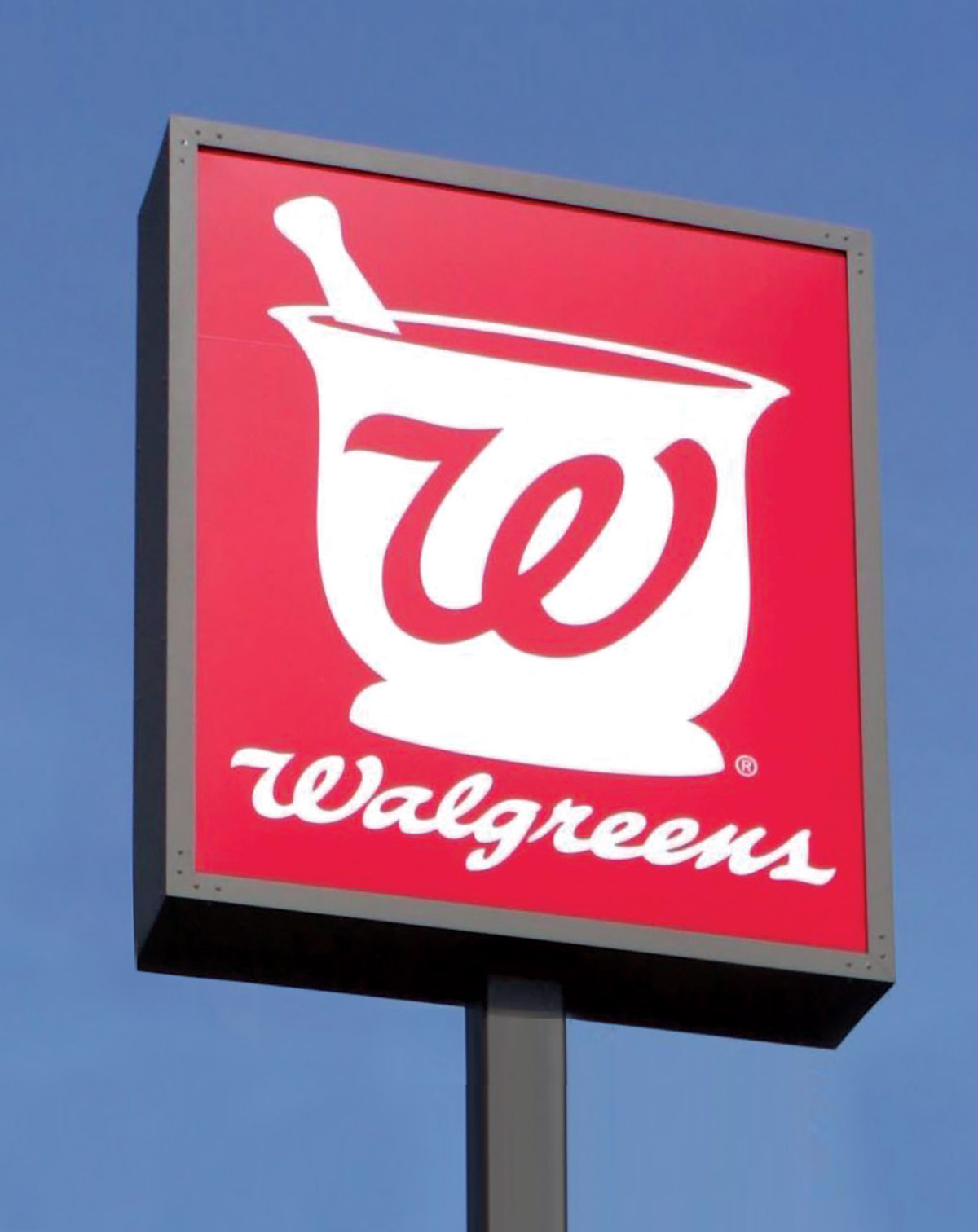
The sign of the mortar and pestle, in fact, is nearly all that remains of an iconography of shop signs that crowded the streets of Europe from the late Middle Ages into the first decades of the nineteenth century. Only two other such symbols are still hung out: the barber’s pole and the sign of the three gold balls you’ll see on pawnshops. But imagine for a second what those streets must have looked like: The sign of the ax. The sign of the last. The sign of three shuttles. Signs like these were place names and professional emblems. The sign of the three cups. The sign of the shears. They were enduring landmarks and advertisements. Sons inherited signs from fathers, and former apprentices incorporated the devices on their masters’ signs into those above their own shops. The sign of the hautboy. The sign of the sword and buckler. These signs were a system of common icons by which people with little knowledge of letters and numbers could discern the carpenter’s from the cobbler’s, the weaver’s from the glover’s.
The beginnings of this sign system were straightforward: it was merely the practical display of wares above a workshop’s open window. From the street, passersby in, say, London’s Eastcheape or in Paris’s Latin Quarter could spot a dangling leg of mutton over the butcher’s, a string of long woolen stockings over the tailor’s, or a white, conical loaf of hard sugar over the grocer’s. Tools of the trade, like a cobbler’s shoe-shaped wooden last or a tailor’s shears, served about the same purpose.
Above an apothecary’s shop, the mortar and pestle were given pride of place precisely because what they did was key to the apothecary’s stock-in-trade, which was to transform things. The apothecary turned raw ingredients into remedy—and pulverizing your aloeswood or your mandrake was an essential step (“that they may acquire a new faculty,” as the seventeenth-century Dispensatorium Medicum, a much-used pharmacopeia, put it). Sure, the apothecary might purvey many of the same spices as his neighbor the grocer: cinnamon sticks, mace, ginger, cloves, grains of paradise. But in his shop, the apothecary would pound, grind, distill, brew, and mix these ingredients to produce the pills, syrups, cordials, tinctures, broths, and ointments that could (supposedly) heal a person.
There was a mystical aspect to these transformative powers, as other popular emblems of the trade—the phoenix, the dragon, the unicorn, and the salamander—suggest. And the apothecary took pains to convey his arcane knowledge, displaying jars of exotic simples and compounds, presses for extracting oils, alembics for distillation, and great cauldrons of copper and brass. Animals from far-off places were suspended from the ceilings—like the stuffed alligator in one seventeenth-century London apothecary, or the fifteen-foot-long “sea serpent” in a sixteenth-century apothecary in Kent. As King James observed, when his royal charter of 1617 at long last established the Apothecaries as a company in their own right, separate from the Grocers: “Grocers are but merchants. The business of the apothecary is a mystery.” The sign of the mortar and pestle, hung outside a shop, stood for that mystery.
In an old city, there is something reassuring in how the new grows out of the old, in how the oldest bricks and stones don’t simply vanish at the end of an era but become, instead, the foundation of the new. The past, these neoclassical columns and Art Deco ziggurats say, is not disposable. But among the lunar colonies of strip malls that extend across so much of America, there are few palpable reminders of any other time but now.
And so, in the Walgreens parking lot at a strip mall intersection, I took unexpected comfort in the sign of the mortar and pestle, the sole indication of historical place and time beyond that expanse of parking space and prefab franchise buildings. It came to seem as if it was waiting for me, silently alluding to the centuries it’s endured. And the silent part is almost the best part of it: how seamlessly the old symbol still works. Anyone living in thirteenth-century Avignon or Ipswich would understand as well as I do that this is a place to buy medicines, remedies for fever or cough or a sour stomach.
• • •
Here in Manhattan, there is a stretch of Lexington Avenue I sometimes walk, in Spanish Harlem, where the only shop sign that seems more common than the mortar and pestle of the farmacia is that of the barber’s pole. The streets, wonderfully, are chockablock with their candy-striped swirls. Salgado Barbershop at Lexington and 110th, Sanchez Barbershop at 112th, German Barbershop at 115th, Level’s Unisex at 125th—just to name a few. Los Muchachos Barbershop at 116th has striped the entire façade of their shop like a barber’s pole. Even Lisa Nail and Beauty Salon at Lex and 110th has a candy-striped pole out. And just a few blocks east of Lexington, on 116th, is Claudio’s, the last Italian barbershop in East Harlem. High rents recently forced him to leave the shop he’d worked in for decades, a tiny, one-story, tin-roof building set down in the 1870s, when work building trolley tracks first brought Italian immigrants to the neighborhood. But at the new place farther down the block, he’s still got his pole out.
In front of every one of these shops, hung out like a lantern, is the red-white-and-blue helix of the barber’s pole. It stands for nothing more particular than the general idea of a barbershop, and it has no more tangible use now than the golden arches on every McDonald’s or the green-and-white-mermaid in the window of a Starbucks. But the pole was once as central to the barber’s trade as the mortar and pestle was to the apothecary’s.
For centuries throughout Europe, the barber was the only sort of physician most people knew. Unlike the “learned surgeons” of the academy, these rude “empirics” practiced the more crude techniques of the trade. They ran an all-service business, where men were just as likely to come in for a shave and a haircut as they were to have their blood let, their teeth pulled, their wounds sutured, the pocks and blisters of venereal disease treated, and—worst-case scenario—their limbs amputated. But it was the bloodletting that gave barbers their unmistakable trade sign.
In paintings of the busy, social scene that was the barber-surgeon’s, it’s easy enough to spot the man whose blood is being let. Take the mid-seventeenth-century Surgeon by the Flemish painter Teniers the Younger, or Jacob Franszn and Family in His Barber-Surgeon Shop, painted by a Dutch artist around the same time. In both depictions, the patient sits in a chair, his upper arm tightly bound with swathing bandages, gripping what looks like a long walking stick—all the better to make a vein bulge. The officiating barber, or an apprentice, holds a basin to collect the dripping blood—presumably an amount sufficient to rebalance the sickly patient’s humors.
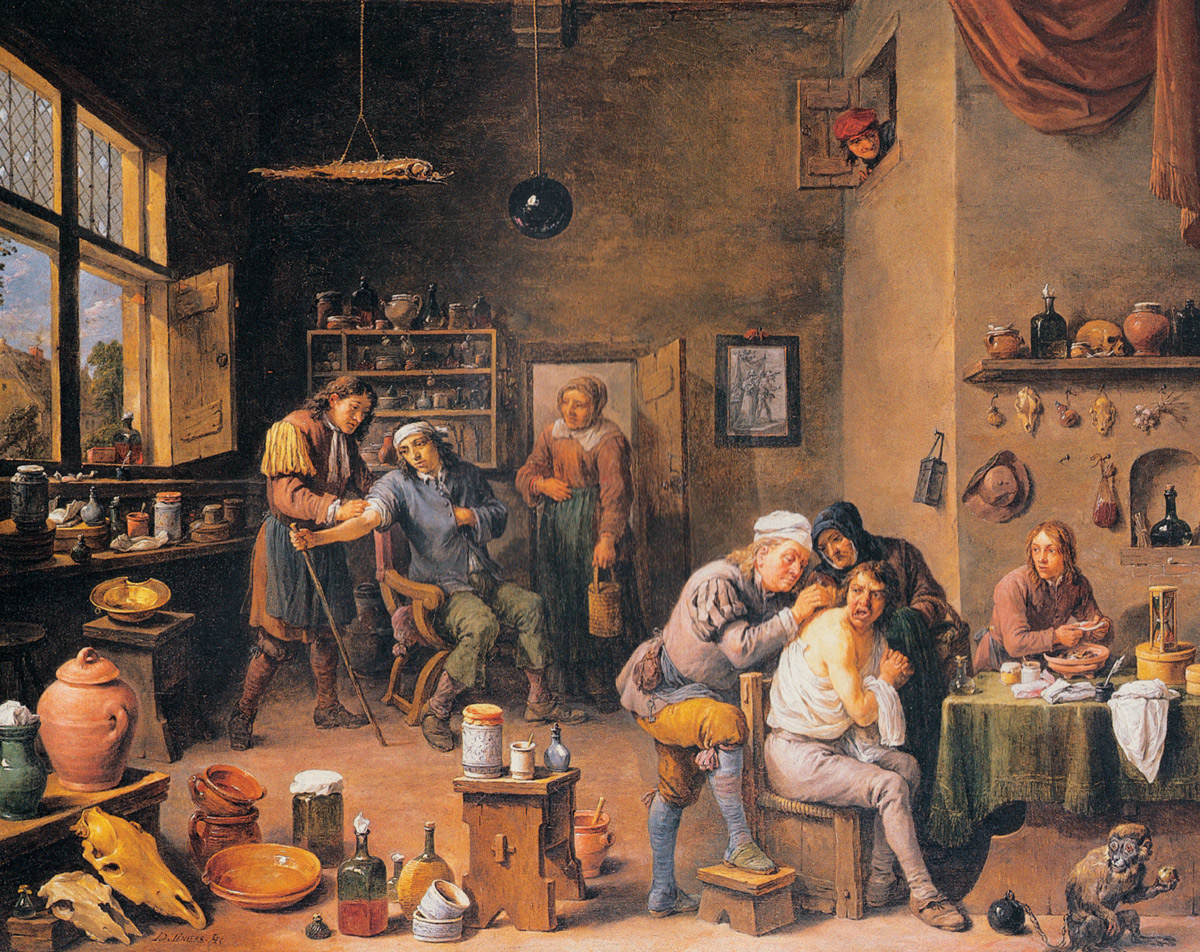
A bit of doggerel by early eighteenth-century English poet John Gay (he of The Beggar’s Opera) gives us a somewhat better sense of what this early trade sign looked like:
His pole, with pewter basins hung,
Black rotten teeth in order strung,
Ranged cups, that in the window stood,
Lined with red rags, to look like blood,
Did well his threefold trade explain,
Who shaved, drew teeth, and breathed a vein.
From what I can gather, this slightly macabre display outside the shop was akin to a shoemaker hanging out his wooden last (the foot-shaped device used to fashion shoes) or a weaver hanging out a wooden shuttle. Just bloodier. Among my favorite bits of historical evidence for this practice is a notice in the 1419 Liber Albus, a compendium of London common law. “No barbers shall be so bold or so daring,” it avers, “as to put blood in their windows openly or in view of folks.” Evidently, a lot of barbers were.
At some point, though, barbers did stop hanging out the bloody tools of their trade and settled on something that was merely evocative. To what degree the law precipitated this change is hard to say. By the sixteenth century, other shop owners were also beginning to hang enlarged metal or wooden models of their tools or wares outside their shops. They were sturdier than everyday objects alone, and could be made bigger, too—and thus more eye-catching. If you stare for a while at William Hogarth’s bawdy eighteenth-century street scenes, you can spot these heavy-looking, three-dimensional signs: a metal pitcher leaning crookedly outside an inn; an outsized casket advertising a coffin-maker; a wine barrel, or “tunne,” hanging above a shopfront, the unmistakable sign of a vintner.†
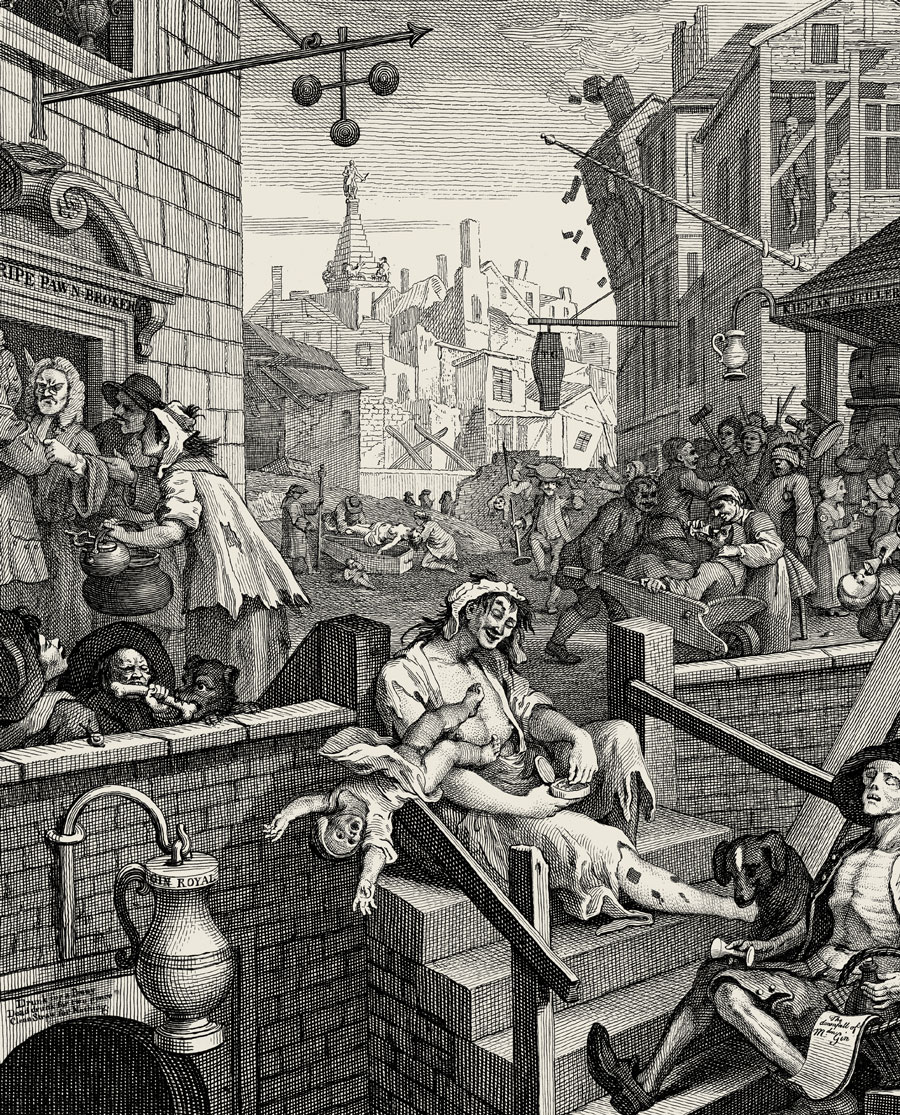
As for the barber, a red-and-white-painted pole replaced the gripping pole that was once hung out with basins of blood. Red for blood, of course, and white, it seems, for the swathing bandages used as tourniquets, which were perhaps once hung out with the pole to flutter in the breeze. And the stripe of blue that’s threaded through the red and white of all those barber’s poles hung out on Lexington? One barber I chatted with thought maybe it stood for health. He shrugged—just a guess. I look at the ubiquitous jar of chemically blue Barbicide on the counter of every barbershop I pass, and I think it could just as well be that. But officially, the blue stripe is a relic from the year 1540, when Henry VIII himself decreed that “surgery” was no longer to be practiced in the same place as barbery. Red and white, according to this new statute, would color only the surgeon’s pole. Barbers, stripped of their bloody trade, were ordered to hang out a pole of blue and white instead. But you get the sense that this color scheme never quite caught on. As late as 1797, in fact, this decree was reiterated before the House of Lords. As one historian notes, “Laws were made, but they could not be, or at all events were not, enforced.” In any case, I can’t find any sixteenth-century oil paintings of blue-and-white poles. And, as I wander past the blocks of barbershops on Lexington Avenue, the jars of Barbicide and the swivel chairs revealing the vulnerable napes of men’s necks in the shop front windows, not one of the barber’s poles I see is without its red stripe. The bright color spirals, in perpetuity, down the length of the pole, having persisted since the time when a barber could breathe a vein.
• • •
As I follow this trail of barber’s poles and signs of the mortar and pestle up Lexington, it seems only natural to eventually come upon the other known remnant of early shop sign iconography: the three gold balls of the pawnshop.
As it happens, on this stretch of Lexington Avenue, there are many of these symbols. The most striking instance is on a row of red-brick tenement buildings that extends from 116th Street to 117th Street. In tall block letters, EZ PAWN CORP. BUILDING is blazoned across the very top of the five-story structure. And flanking this proprietary title on either side is the telltale sign of three dangling balls. Below, the bright storefront awnings promise CA$H LOANS, and the symbol is stamped like an official seal just above display windows crammed with secondhand electric guitars and speakers. Half a block away, just off the southeast corner of Lex and 116th, you can see the same trio of balls on the green-and-gold awning of LOAN$ R US, which occupies the ground floor of a similar tenement building. (They’ve mainly got iPods in the front window, but inside is a small collection of antiques and fossils that have also gone unredeemed, not the least of which is a triangular tooth billed as that of a hundred-million-year-old Megalodon shark). And just across the street, a few shops down, the symbol appears again, this time on the red neon sign of Modell, a small local chain that’s been around since 1893. It’s not the heavy, free-hanging sign of the three balls that’s so conspicuous in those eighteenth-century London street scenes by Hogarth, but there’s no mistaking it.
Pawnshops were located on the fringes of the medieval and early modern city, far from the cathedral that was the center of social and commercial life. Castigated by the Church for the sin of usury, and often on tenuous legal footing with city rulers, the pawnbroker was nonetheless frequented by a broad swath of society, including the clergy and nobility—none of whom wanted to be seen there. The wealthy secured their loans with things like silver cups, armor, and handsome leather saddlery, while the poor scrounged up household textiles and used clothing. The clergy, for their part, had a habit of pawning things from the vestry and altar of their own churches and monasteries. It seems to have been an old problem: in the ninth century, the archbishop of Reims suggested a decree be issued against the clergy’s pawning of “the vestments and the communion plate.” Similar decrees were issued throughout the ensuing centuries, all of them vexed at the monks’ and clergy’s use of “ecclesiastic books, vestments [and] other ornaments” as collateral.
These days, the pawnshop’s chief purpose (namely, CA$H LOANS) having changed very little, pawnbrokers still set up shop in the scruffier neighborhoods of a city. And their trade symbol, blazoned now on the awnings and in the neon lights of places like EZ Pawn, Loans R Us, and Modell Pawn, is rooted in something like a tool of the trade: coins, money. While, of course, actual coins were never hung out—not as a barber’s pole or a mortar and pestle would have been—the sign of the three gold balls probably comes from an even older tradition of iconography: heraldry. In medieval Europe, gold roundels were a common heraldic representation of money. As early as the thirteenth century, the arms of the Arte del Cambio, the guild of bankers and moneychangers in Florence, bore what heraldry describes as “gules, semée of bezants.” That is, a scattering of gold roundels upon a red background. As for there being three of them on the pawnbroker’s sign: three was just the most common number of charges on a heraldic shield. The same was true of early shop signs: three sugar loaves for the grocer’s, three shuttles for the weaver’s, three sheaves of wheat for the baker’s, and so on.
There is, for some reason, though, a fair amount of mythology surrounding the origin of the pawnbroker’s sign. Pawn Shops Today, which is something like the PR arm of the industry, uses the three gold balls as its logo but offers the legend of St. Nicholas by way of explanation. The sainted man is said to have left three bags of gold so that “the daughters of a poor man could afford to marry, thus saving them from a life of slavery or prostitution.” While the story is a nice way of positioning the pawnbroker as something like a benevolent uncle, more common explanations like to connect the symbol to the illustrious history of the Medici, remembered today as the most powerful banking family in Renaissance Florence. This theory goes that the three gold balls of the pawnbroker were effectively plucked from the six red balls that decorated the original Medici coat of arms, the outcast moneylender aiming to borrow the reputation of the banking dynasty. Both of these just-so stories appear rather late in the history of pawnshops; they seem to be somewhat aspirational, as if reciting such origins might cast off some of the illicit gleam still associated with the sign of the three gold balls.
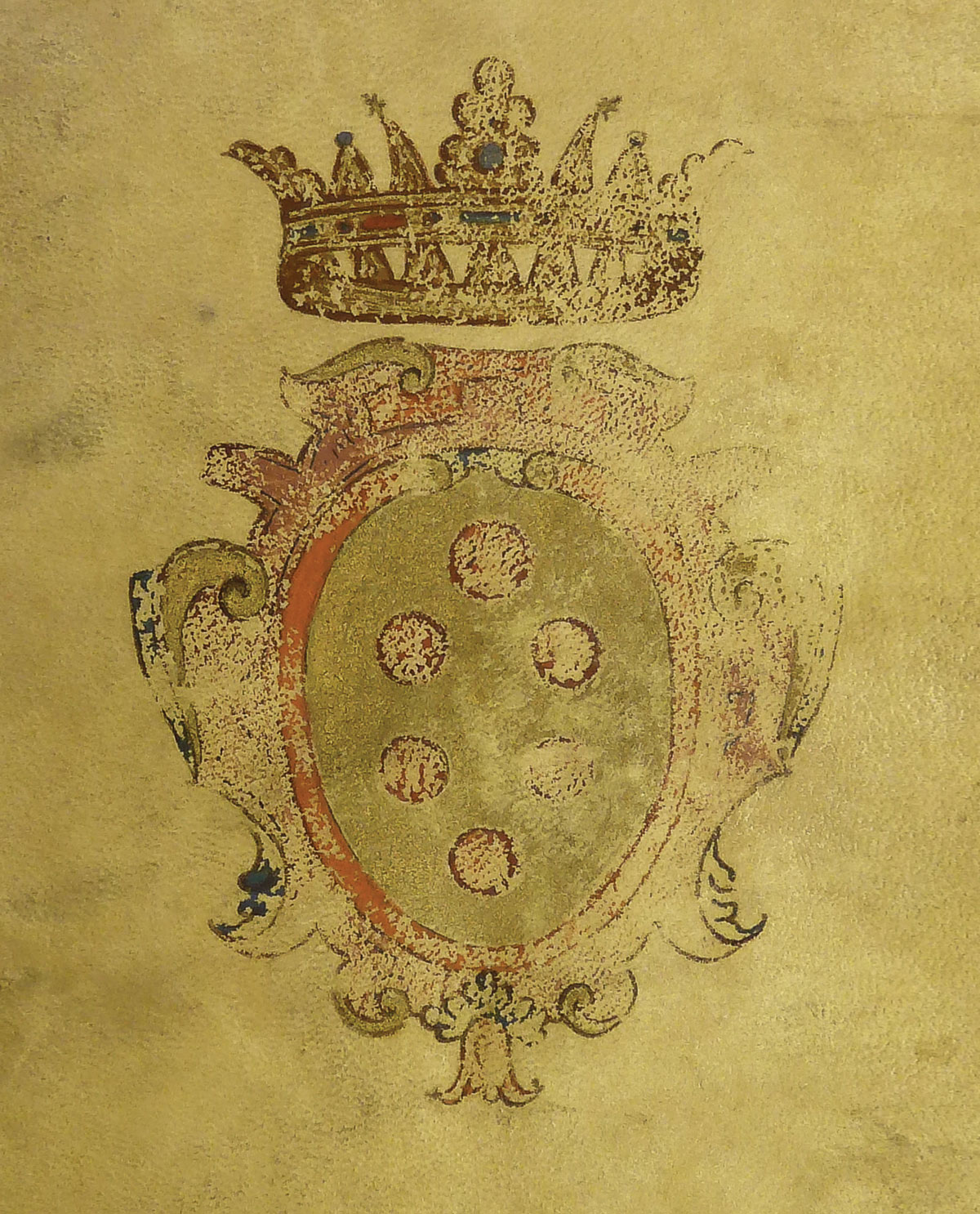
The Medici connection was the answer I got from a worker behind the bulletproof glass of the hock window at the family-owned Lincoln Square Pawn (which is now actually on Amsterdam and 96th). Behind him, rows of tall shelves held plain brown packages with notes affixed to them: pledges that had yet to be redeemed. But he was actually dismissive of the relevance today of this connection to the long-ago Florentine banking family. “It’s not like that’s what it means to anybody now,” he said. “It’s just tradition. The sign means ‘pawnbrokers.’ That’s it.” And he’s right: the other counter workers I was able to buttonhole, in EZ Pawn and Loans R Us, couldn’t say what the origins were. They just knew what it stood for.
• • •
The streets and avenues that I wander these days are undeniably different from those of my small rural hometown—that place where the Walgreens mortar-and-pestle sign seemed the only indication of any time at all before the town’s flat present of parking lots and prefab franchise structures. There is, no question, a sense of historical place and time here in New York, one of the oldest cities in the United States. I feel it in the carved stone lintels of nineteenth-century tenement buildings in Spanish Harlem, in the heavy granite slabs of a nineteenth-century Dutch Reform parish house that is now a chapel. I feel it in Manhattan’s Midtown, where translucent glass skyscrapers rise above stylish Art Deco towers, which themselves look out on the mansard roofs of that Second Empire style the Gilded Age couldn’t get enough of. It is because these older buildings remain—the oldest ones like sentinels of the years—that I have some sense, as I walk through the city’s neighborhoods, that something came before me. Human history, after all, is most palpable in its architecture.
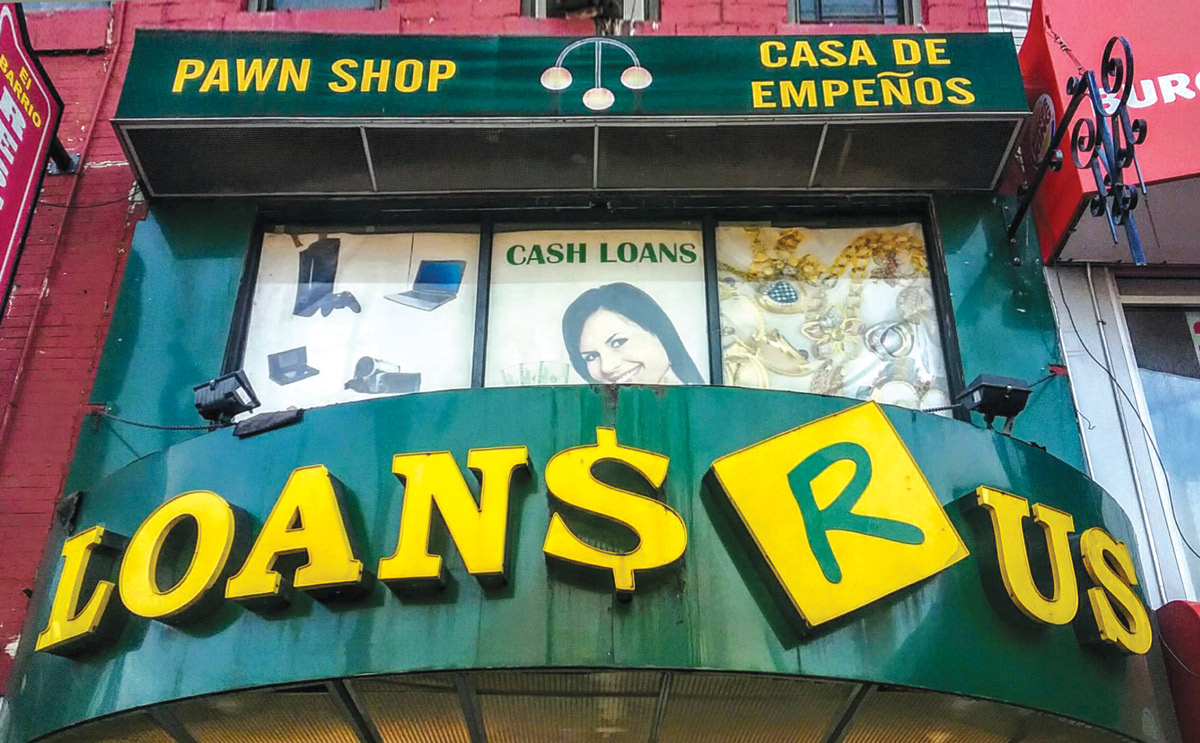
And yet, what is most evident in the architecture of a city like New York is how continually things change. I see this not just in the brief cross-section of history formed by the city’s skyline. I see it in the great domed and pillared old bank buildings now colonized by Duane Reades and CVSs and Chase Bank branches, their LED panels wedged incongruously between neoclassical pilasters and tall windows, now covered with grates. I see it in the wedding cake–like facades that are the telltale sign of an old movie house—those once ubiquitous neighborhood cinemas that haunt the storefront churches and shops and storage facilities that have replaced them. I see it in the coldly reflective glass that has covered over the sturdy masonry of many older, now-gutted buildings. But more significant is what I don’t see, what I can’t even detect. These would be the buildings struck by fire or the wrecking ball long before I ever arrived in the city.
Most people have heard of the most notorious among these losses—like that of the old Pennsylvania Station, its cathedral-like arches and light-filled concourses reduced in 1963 to a troglodyte maze beneath the dull drum of today’s Madison Square Garden. But countless buildings have vanished from the city with much less fanfare. Who today even thinks, for instance, of the second (let alone the first) Madison Square Garden? It’s only from black-and-white photographs that I know of Stanford White’s 1890 “pleasure palace,” crowned by cupolas and known for its elegant minaret of a tower that rose thirty-two stories above Madison Square Park and the pedestrians passing by its cloister of street-level arcades. Or what about Federal Hall, constructed as a city hall in 1699 at the corner of Nassau and the newly christened Wall Street, from remnants of the just-demolished defense wall? Only a drawing exists of this building where Alexander Hamilton argued what was essentially the colonies’ first freedom-of-the-press case, where the Stamp Act Congress met, where work on the constitution was finished. Of its 1788 remodeling as the first US capitol building, a bellwether of the so-called Federalist architectural style and the site of Washington’s inauguration, only a few engravings exist. And what of the high-gabled house on Nassau Street that may have been, in 1753, the first theater built in the city? In my reading, I have come across only two or three lines about it. No images remain. I have no sense of any of these buildings when I walk down the street. They just aren’t a part of the landscape.
In the best cases, the new and old buildings of a city imbue each other with vitality and with historical weight, each one lending the other context, making it part of a larger story. In the worst cases, those buildings that are sentinels of the past burn down or are torn down. Life may go on, but some of history—that sense of continuity between now and long ago—is erased.
Maybe this is why, even in an old city like New York, I still like to look up and see the old trade symbols. The mortar and pestle. The barber’s pole. The pawnbroker’s three gold balls. Once street signs based on simple synecdoche—that canny substitution of a part for the whole—they have passed into a common repertory of symbols. And it is as symbols—as language—that they have outlasted any number of buildings where they’ve been hung out over the centuries. John Ruskin, that nineteenth-century admirer of the stones of Venice, noted that “there are but two strong conquerors of the forgetfulness of men, Poetry and Architecture.” He plumped for the latter, explaining, “it is well to have, not only what men have thought and felt, but what their hands have handled, and their strength wrought, and their eyes beheld, all the days of their life.” It seems to me that these surviving trade symbols hang somewhere between poetry and architecture, handing down to us an idiom as inventive, maybe, as lines of long-ago verse—from Chaucer, from Shakespeare, from nursery rhymes—that have embedded themselves in our everyday speech. And, as with brick-and-mortar buildings we pass in the street, we pass by these old symbols too, outside a strip mall or on a historic avenue. We see their varicolored forms—in wood or metal, neon or chrome, screenprinted or LED displays—almost every day. Just as these old symbols will outlast most of the buildings that hang them out today, they will also outlast any given instantiation—be it in thirteenth-century iron and wood or as twenty-first-century pylon signs.
To me, these old symbols signal not just something for sale—a force that is, inevitably, always at work in the landscape of a city. What they are is a reassuring constant in a landscape that will always be in flux. And in this, they remind, too, of what it is I can’t see.
Alyssa Pelish writes and teaches in New York. Her writing has appeared in Harper’s online, Slate, The Paris Review online, The Smart Set, The Los Angeles Review of Books online, Science, Denver Quarterly, and The New England Review.
Spotted an error? Email us at corrections at cabinetmagazine dot org.
If you’ve enjoyed the free articles that we offer on our site, please consider subscribing to our nonprofit magazine. You get twelve online issues and unlimited access to all our archives.